Plot Summary
Heart Transplant Sparks New Life
Terrell McCaleb, a retired FBI agent, is living a quiet life on his boat in Los Angeles Harbor after receiving a heart transplant. His days are filled with the simple goal of restoring his houseboat and eventually returning to his hometown on Catalina Island. However, his newfound peace is disrupted when he learns that the heart beating in his chest belonged to a murder victim, not an accident victim as he was told. This revelation sets McCaleb on a path of guilt and responsibility, compelling him to investigate the murder of the woman who saved his life.
Uninvited Visitor Brings Dark News
McCaleb's life takes a dramatic turn when Graciela Rivers, the sister of his heart donor, visits him. She reveals that her sister, Gloria Torres, was murdered, not killed in an accident. This news shakes McCaleb to his core, as he realizes he owes his life to a woman who was violently taken from hers. Driven by a sense of duty and guilt, McCaleb decides to use his investigative skills to find Gloria's killer, despite the risks to his own health and the warnings from his doctor.
A Murder Investigation Begins
McCaleb dives into the investigation, using his FBI connections and expertise in crime scene analysis. He learns that Gloria was killed during a convenience store robbery, captured on a grainy surveillance tape. As he reviews the evidence, McCaleb becomes convinced that the murder was not a random act of violence but a targeted killing. He faces resistance from the LAPD detectives on the case, who are skeptical of his involvement and protective of their territory.
The Mysterious Earring Clue
While reviewing the case files, McCaleb discovers a discrepancy: a cross earring Gloria was wearing during the murder is missing from the property report. This missing earring becomes a crucial clue, suggesting that the killer took it as a trophy. McCaleb theorizes that Gloria was not a random victim but was specifically targeted by a stalker who had been watching her. This revelation shifts the focus of the investigation and suggests a more sinister motive behind the murder.
Hypnosis and Hidden Memories
In an effort to gather more information, McCaleb arranges for James Noone, a witness to a related crime, to undergo hypnosis. The session reveals details about the suspect's vehicle and appearance but fails to provide a definitive lead. Despite the lack of concrete evidence, McCaleb remains convinced that the murders are connected and that the killer is a calculating predator who enjoys taunting the authorities.
A Stalker's Sinister Game
McCaleb's investigation leads him to believe that the killer is a stalker who meticulously plans his attacks, choosing victims who frequent places with surveillance cameras. The killer's need for recognition and his collection of trophies suggest a psychological profile of someone who derives power from evading capture. McCaleb's theory challenges the initial assumption that the murders were simple robberies gone wrong, pointing instead to a more complex and dangerous adversary.
A Detective's Determined Pursuit
Despite the risks to his health and the skepticism of others, McCaleb is determined to solve the case. He feels a deep connection to Gloria and a responsibility to bring her killer to justice. As he delves deeper into the investigation, McCaleb faces personal and professional challenges but remains undeterred. His pursuit of the truth becomes a race against time, as he seeks to prevent the killer from striking again.
A Sinister Connection Unveiled
Terrell McCaleb, a retired FBI agent, is drawn into a web of deceit and murder when he realizes that the man he thought was a Good Samaritan, James Noone, is actually the killer. Noone, a master of disguise, has been orchestrating a series of murders to provide McCaleb with a heart transplant, making McCaleb a pawn in his twisted game. The realization that Noone is the infamous Code Killer, who McCaleb once hunted, adds a layer of personal torment to the investigation. McCaleb is forced to confront the horrifying truth that his life was saved at the cost of others, orchestrated by a man who wanted to bind their fates together forever.
A Desperate Search for Truth
With the authorities closing in on him as a suspect, McCaleb must clear his name and find Noone before more lives are lost. He delves into the evidence, piecing together the connections between the victims and the killer. The investigation leads him to a remote beach in Mexico, a place Noone described under hypnosis as his sanctuary. McCaleb's pursuit is not just about justice but also about redemption, as he grapples with the moral implications of his survival being tied to the deaths of others.
A Deadly Game of Cat and Mouse
McCaleb arrives at Playa Grande, where he believes Noone is hiding. The beach, with its serene beauty, is a stark contrast to the deadly game being played. McCaleb's instincts are put to the test as he navigates the treacherous terrain, both physical and psychological, laid out by Noone. The killer's taunts and traps are designed to push McCaleb to his limits, forcing him to confront his own fears and the darkness within. The stakes are high, with the lives of Graciela and her nephew, Raymond, hanging in the balance.
The Final Confrontation on the Beach
The tension reaches its peak as McCaleb confronts Noone on the beach. The killer, armed and dangerous, reveals his twisted motivations and the depth of his obsession with McCaleb. In a battle of wits and wills, McCaleb must outsmart Noone to save Graciela and Raymond. The confrontation is a test of McCaleb's resolve and his ability to overcome the psychological scars left by his past. The outcome will determine not only his fate but also the future of those he cares about.
A New Beginning Amidst Shadows
With Noone defeated, McCaleb is left to pick up the pieces of his life. The experience has changed him, forcing him to reevaluate his beliefs and his place in the world. As he returns to the sea, the place where he feels most at peace, McCaleb finds solace in the possibility of a new beginning with Graciela and Raymond. The journey has been one of pain and revelation, but it has also opened the door to healing and hope. McCaleb's heart, both literally and metaphorically, beats with renewed purpose as he looks toward the future.
Characters
Terrell McCaleb
Terrell McCaleb is a former FBI agent whose life is saved by a heart transplant. The revelation that his donor was murdered sets him on a path to uncover the truth. McCaleb is driven by guilt and a need for redemption, as he grapples with the moral implications of his survival. His expertise and determination make him a formidable investigator, but his personal connection to the case adds a layer of complexity to his pursuit of justice.
Graciela Rivers
Graciela Rivers is the sister of McCaleb's heart donor, Gloria Torres. Her quest for justice for her sister's murder brings her into McCaleb's life. Graciela's strength and compassion are tested as she becomes a target in Noone's deadly game. Her relationship with McCaleb evolves from one of necessity to one of deep emotional connection, offering both of them a chance at healing and hope.
Gloria Torres
Gloria Torres is the murder victim whose heart saves McCaleb's life. Her death is the catalyst for the investigation, and her presence is felt throughout the story. Gloria was a kind and caring person, dedicated to her family and community. Her murder is a tragic loss, and the mystery surrounding her death drives McCaleb to seek justice on her behalf.
James Noone/Daniel Crimmins
James Noone, also known as Daniel Crimmins, is a master of disguise and the orchestrator of a series of murders. His obsession with McCaleb drives him to orchestrate the killings to provide McCaleb with a heart transplant, binding their fates together. Noone's psychological complexity and his ability to manipulate those around him make him a dangerous adversary. His ultimate goal is to leave a lasting impact on McCaleb, ensuring that his legacy lives on through the agent he once hunted.
Raymond Torres
Raymond Torres is Graciela's young nephew, whose life is endangered by Noone's machinations. His innocence and vulnerability add urgency to McCaleb's mission, as the agent is determined to protect the boy from harm. Raymond's presence serves as a reminder of the stakes involved and the importance of fighting for a future free from the shadows of the past.
Bonnie Fox
Dr. Bonnie Fox is McCaleb's cardiologist, who warns him against getting involved in the investigation. She is concerned about the impact of stress on his health and ultimately decides to sever their professional relationship when McCaleb refuses to heed her advice. Her departure underscores the personal risks McCaleb faces as he pursues the case.
Eddie Arrango
Eddie Arrango is one of the LAPD detectives assigned to the Gloria Torres case. He is skeptical of McCaleb's involvement and protective of his investigation. Arrango's confrontational attitude creates tension between him and McCaleb, highlighting the challenges of collaboration in law enforcement.
Dennis Walters
Dennis Walters is Arrango's partner, who is more open to McCaleb's involvement but ultimately defers to Arrango's lead. Walters represents the complexities of working within a team and the difficulties of navigating professional relationships in a high-stakes investigation.
Vernon Carruthers
Vernon Carruthers is a friend of McCaleb's from the FBI who assists with the investigation by running ballistics through the DRUGFIRE computer. His willingness to help underscores the importance of connections and collaboration in solving complex cases.
Tony Banks
Tony Banks is a video technician who assists McCaleb by enhancing the surveillance footage from the crime scene. His expertise is vital in uncovering details that might otherwise be missed, highlighting the importance of technology in modern investigations.
Plot Devices
Heart Transplant
The heart transplant is the catalyst for the entire story, providing McCaleb with a new lease on life and a personal connection to the murder victim. This plot device creates a unique motivation for McCaleb to solve the case, as he feels indebted to the woman whose heart saved him. The transplant also introduces themes of guilt, responsibility, and the interconnectedness of life and death.
Surveillance Footage
The surveillance footage from the crime scenes serves as a crucial piece of evidence in the investigation. It captures the murders and provides insights into the killer's methods and motivations. The footage also highlights the limitations of technology, as it fails to capture the killer's face or provide definitive leads. This plot device underscores the challenges of modern crime-solving and the importance of human intuition and analysis.
Hypnosis
Hypnosis is used as a tool to access hidden memories and gather information from a key witness. While it ultimately fails to provide a breakthrough in the case, it demonstrates the lengths to which investigators will go to solve a crime. This plot device also explores the complexities of memory and the limitations of relying on witness accounts in criminal investigations.
Missing Earring
The missing cross earring becomes a pivotal clue in the investigation, suggesting that the murder was not a random act but a targeted killing. This plot device shifts the focus of the investigation and introduces the possibility of a stalker with a sinister motive. The earring symbolizes the personal nature of the crime and the killer's need for trophies, adding depth and complexity to the story.
Disguise and Deception
Noone's use of disguise and deception is a key plot device, allowing him to evade capture and manipulate those around him. His ability to change his appearance and identity adds layers of complexity to the investigation, as McCaleb must see through the facade to uncover the truth. This device highlights the theme of appearances versus reality and the challenge of discerning truth in a world of lies.
Psychological Manipulation
The psychological manipulation employed by Noone is a central plot device, as he seeks to control and torment McCaleb. The killer's understanding of human psychology allows him to exploit McCaleb's fears and weaknesses, creating a tense and suspenseful narrative. This device underscores the theme of the mind as a battleground and the power of psychological warfare in the pursuit of justice.
Analysis
"Blood Work" by Michael Connelly is a gripping exploration of guilt, redemption, and the complex web of human connections. Through the character of Terrell McCaleb, the novel delves into the moral implications of life-saving medical procedures and the responsibilities they entail. The story challenges readers to consider the cost of survival and the lengths one will go to seek justice and redemption. Connelly masterfully weaves a narrative that combines psychological depth with thrilling suspense, highlighting the intricate dance between predator and prey. The novel ultimately suggests that even in the darkest moments, there is potential for new beginnings and hope, as long as one is willing to confront their past and embrace the future.
Last updated:
FAQ
Synopsis & Basic Details
What is Blood Work about?
- A Second Chance, A Dark Debt: Blood Work follows Terrell McCaleb, a retired FBI profiler living a quiet life on his boat after a heart transplant. His peace is shattered when he learns his donor, Gloria Torres, was murdered, not killed in an accident.
- Guilt-Driven Investigation: Racked with survivor's guilt, McCaleb is compelled to investigate Gloria's unsolved murder, despite his fragile health and his doctor's warnings. He uses his dormant FBI skills to delve into a case the LAPD has dismissed as a random robbery.
- Unveiling a Twisted Obsession: As McCaleb digs deeper, he uncovers a sinister connection between Gloria's death and other seemingly unrelated killings, revealing a calculating serial killer with a personal vendetta and a twisted obsession that directly involves McCaleb himself.
Why should I read Blood Work?
- Deep Psychological Thriller: Readers should dive into Blood Work for its profound exploration of guilt, redemption, and the psychological toll of a life spent hunting evil. Michael Connelly masterfully crafts a narrative that goes beyond typical crime procedural, delving into the protagonist's internal struggles.
- Unique Premise & Personal Stakes: The novel offers a compelling and unique premise: a detective investigating the murder of his own heart donor. This personal connection elevates the stakes, making McCaleb's quest for justice a deeply intimate and dangerous journey, full of unexpected twists.
- Masterful Plotting & Character Depth: Connelly's signature intricate plotting keeps readers on the edge, while his nuanced character development, especially McCaleb's internal conflict and evolving relationships, provides rich emotional depth often missed in the genre.
What is the background of Blood Work?
- Post-FBI Retirement & Health Crisis: The story is set against McCaleb's forced retirement from the FBI due to severe cardiomyopathy, a condition exacerbated by the stress of his demanding career hunting serial killers. This personal health crisis provides the immediate backdrop for his new, quieter life on a boat in San Pedro.
- Los Angeles Crime Landscape: The narrative is deeply embedded in the diverse and often violent landscape of Los Angeles, from the San Pedro marinas to the San Fernando Valley. Connelly uses the city's sprawling geography and its various law enforcement agencies (LAPD, Sheriff's Department, FBI) to create a realistic and complex operational environment for McCaleb's investigation.
- Organ Donation & Medical Ethics: A significant background element is the process of organ donation and the ethical considerations surrounding it. The story highlights the anonymity typically maintained between donor and recipient, and the profound impact when that veil is lifted, forcing McCaleb to confront the human cost of his survival.
What are the most memorable quotes in Blood Work?
- "I got her heart. I'm alive because she's dead. And that cuts me into this in a big way.": This quote, spoken by McCaleb to Arrango, encapsulates the core of his motivation and the profound, almost spiritual, debt he feels towards Gloria Torres. It defines his personal stake in the investigation, transcending professional duty.
- "You are the one bringing me back. You're my chance.": Whispered by McCaleb to Graciela, this line reveals his deep emotional vulnerability and his hope for personal restoration. It signifies his belief that Graciela, and the life she represents, is his path to healing and moving beyond the darkness of his past.
- "Every breath you take belongs to me. Every beat of that stolen heart is the echo of my voice in your head. Always. Every day.": These chilling words from the Code Killer's message to McCaleb reveal the true depth of his twisted obsession. It's a declaration of psychological ownership, transforming McCaleb's life-saving transplant into a perpetual torment and a symbol of the killer's ultimate victory.
What writing style, narrative choices, and literary techniques does Michael Connelly use?
- First-Person, Introspective Narrative: Connelly employs a first-person narrative from McCaleb's perspective, allowing deep access to his internal thoughts, anxieties, and moral dilemmas. This choice immerses the reader in McCaleb's psychological state, particularly his survivor's guilt and renewed sense of purpose.
- Procedural Realism with Emotional Depth: The writing style blends meticulous police procedural details with profound emotional introspection. Connelly uses authentic investigative techniques and jargon ("hard tango," "full field") but grounds them in McCaleb's personal journey, making the technical aspects resonate on a human level.
- Symbolism and Foreshadowing: Connelly subtly weaves in symbolism, such as the boat "The Following Sea" representing unseen dangers and McCaleb's past, and uses seemingly minor details (like the missing earring or the Code Killer's number) as crucial foreshadowing that unravels into a complex, personal conspiracy.
Hidden Details & Subtle Connections
What are some minor details that add significant meaning?
- The "CI" Logo on the Hat: James Noone's baseball cap, described as having a "C with a line cut through. A one or a capital I or a small L. And then there's a circle-I mean an oval-around the whole thing," is initially dismissed as a generic design. This seemingly minor detail is later revealed to be a crucial, personalized clue from the Code Killer, representing "Catalina Island" and "I" (for McCaleb), a direct taunt that McCaleb initially misses.
- The Watch on Chan Ho Kang's Wrist: During the initial viewing of the Sherman Market surveillance footage, McCaleb notes Mr. Kang's watch but cannot read the time. This seemingly insignificant detail becomes the linchpin for McCaleb's breakthrough, allowing him to triangulate the exact time of the shooting and expose the "Good Samaritan" as the killer by revealing the 911 call was made before the murder.
- The Code Killer's Number "903472568": This recurring number, which baffled FBI cryptologists, is revealed to be a simple, yet profound, taunt from the Code Killer. McCaleb realizes it uses every digit except the number one, signifying "No One" or "I am no one," directly linking the killer's identity to James Noone and his psychological profile.
What are some subtle foreshadowing and callbacks?
- McCaleb's Dream of His Own Eyes: Early in the novel, McCaleb dreams he is shot in the heart by the masked killer, only to recognize the killer's eyes as his own. This dream subtly foreshadows the deep, twisted connection between McCaleb and the Code Killer, implying a shared identity or fate, and the killer's ultimate goal of making McCaleb a reflection of himself.
- The "Following Sea" Boat Name: McCaleb explains his father named the boat "The Following Sea" as a reminder to "always watch over your shoulder" for unseen dangers that can swamp you. This serves as a constant, subtle foreshadowing of the Code Killer's meticulous stalking and the unexpected, devastating attacks that come from behind, ultimately culminating in the killer's personal pursuit of McCaleb.
- The Code Killer's Letters to McCaleb: Graciela mentions the Code Killer sent letters to McCaleb, making the case "personal." This callback to McCaleb's past cases subtly hints at the killer's long-standing obsession with him, laying the groundwork for the revelation that the current murders are a continuation of that fixation, orchestrated specifically for McCaleb's benefit and torment.
What are some unexpected character connections?
- James Noone as the Code Killer: The most unexpected connection is the revelation that James Noone, the seemingly helpful witness, is actually Daniel Crimmins, the infamous Code Killer McCaleb had hunted years ago. This transforms a seemingly new case into a deeply personal and long-standing vendetta, binding McCaleb's past and present.
- Bonnie Fox's Unwitting Complicity: Dr. Bonnie Fox, McCaleb's trusted cardiologist, becomes an unwitting participant in the killer's scheme. Her medical expertise and access to BOPRA records are exploited, highlighting how even well-intentioned professionals can be manipulated in a larger, sinister plot.
- Buddy Lockridge's Unintentional Heroism: Buddy Lockridge, McCaleb's seemingly simple and often annoying neighbor, unexpectedly becomes a crucial figure. His keen observation skills (noticing the dust outline in Cordell's car) and his discovery of the planted murder weapon under McCaleb's boat are pivotal, demonstrating that heroism can come from the most unlikely sources.
Who are the most significant supporting characters?
- Jaye Winston, the Dedicated Sheriff's Detective: Jaye Winston is crucial as McCaleb's primary ally within law enforcement. Her dedication, open-mindedness, and willingness to challenge bureaucratic inertia allow McCaleb to pursue leads and eventually gain official support, despite the FBI and LAPD's skepticism. She embodies the ethical and professional counterpoint to Arrango.
- Graciela Rivers, the Catalyst for Redemption: Graciela is the emotional heart of the story, serving as the catalyst for McCaleb's investigation and his personal journey toward healing. Her unwavering belief in him, even when he becomes a suspect, provides McCaleb with the emotional anchor he desperately needs, symbolizing hope and a future beyond his haunted past.
- Daniel Crimmins (James Noone), the Obsessive Adversary: Crimmins is the antagonist whose twisted obsession drives the entire plot. His meticulous planning, psychological manipulation, and personal connection to McCaleb make him a profoundly significant character, representing the ultimate evil McCaleb must confront to find peace and redemption.
Psychological, Emotional, & Relational Analysis
What are some unspoken motivations of the characters?
- McCaleb's Quest for Self-Forgiveness: Beyond solving Gloria's murder, McCaleb is driven by an unspoken need to atone for his past failures and the perceived "evil" that consumed his original heart. His relentless pursuit is a form of self-flagellation and a desperate attempt to prove his worthiness of the "gift" of life, as highlighted by his internal monologue: "His selfish dream of redemption would be another painful dose of reality for her."
- Arrango's Insecurity and Professional Jealousy: Detective Eddie Arrango's aggressive territoriality and dismissiveness towards McCaleb stem from an unspoken insecurity about his own competence and a fear of being shown up. His constant need to assert authority and belittle McCaleb ("washed-out fed") reveals a deep-seated professional jealousy, especially when faced with an outsider's potential success on a stalled case.
- Crimmins's Desire for Recognition and Control: The Code Killer's ultimate motivation, revealed in his message to McCaleb, is not just vengeance but a profound craving for recognition and absolute control. He orchestrates McCaleb's survival and subsequent torment to bind them together, ensuring his legacy lives on through his nemesis, a twisted form of immortality and validation.
What psychological complexities do the characters exhibit?
- McCaleb's Survivor's Guilt and Identity Crisis: McCaleb grapples with profound survivor's guilt, feeling he is "the wrong one saved." This leads to an identity crisis, as he struggles to reconcile his past as a driven FBI agent with his new, fragile existence. His internal conflict is evident when he questions, "How can I live with this?" after realizing his life is tied to murder.
- Crimmins's Narcissistic Grandiosity and Authority Complex: Daniel Crimmins exhibits extreme narcissistic grandiosity, believing he is intellectually superior and capable of orchestrating a complex game with McCaleb. His "Code Killer" persona and the "No One" motif reveal an authority complex, stemming from his LAPD washout, where he seeks to prove his worth by outsmarting and controlling law enforcement, particularly McCaleb.
- Graciela's Resilience and Burden of Hope: Graciela displays remarkable resilience in the face of tragedy, but her hope for justice places an immense burden on her. Her emotional complexity lies in her ability to maintain faith in McCaleb, even when he becomes a suspect, and her struggle to reconcile her grief with the possibility of new emotional connections.
What are the major emotional turning points?
- Graciela's Revelation of Gloria's Murder: The moment Graciela reveals Gloria was murdered, not killed in an accident, is a pivotal emotional turning point for McCaleb. It shatters his carefully constructed peace and ignites his survivor's guilt, compelling him to action despite his fragile health. This scene establishes the core emotional conflict of the novel.
- McCaleb's Discovery of the Missing Earring: The realization that Gloria's cross earring was deliberately taken by the killer transforms the case from a random robbery into a targeted, personal attack. This discovery fuels McCaleb's rage and dedication, shifting his emotional investment from generalized guilt to a focused, vengeful pursuit of a specific, malicious evil.
- The Code Killer's Message to McCaleb: The chilling message left on Noone's computer, revealing his long-standing obsession and the true motive behind the murders, is the ultimate emotional climax. It forces McCaleb to confront the horrifying truth that his life is a "gift" from his nemesis, creating an unbearable psychological burden and a profound sense of violation.
How do relationship dynamics evolve?
- McCaleb and Graciela: From Obligation to Intimacy: Their relationship evolves from a professional obligation, driven by McCaleb's guilt, into a deep emotional and romantic connection. Initially, McCaleb keeps her at arm's length, but her unwavering belief in him and shared vulnerability ("I want to know you") break down his emotional walls, leading to intimacy and a shared vision for a future.
- McCaleb and Jaye Winston: From Skepticism to Trust: Their dynamic shifts from initial professional skepticism and territoriality (especially from Winston's colleagues) to a strong bond of trust and mutual respect. Winston's willingness to listen to McCaleb's unconventional theories and ultimately defy her superiors to help him highlights a rare professional alliance built on shared dedication to justice.
- McCaleb and the Law Enforcement System: From Insider to Outsider: McCaleb's relationship with the broader law enforcement system transforms from that of a respected FBI insider to a distrusted outsider and eventually a suspect. This evolution underscores the bureaucratic obstacles and personal betrayals he faces, forcing him to rely on his own instincts and a few trusted allies.
Interpretation & Debate
Which parts of the story remain ambiguous or open-ended?
- The Code Killer's Ultimate Fate: While Crimmins is killed by McCaleb, the narrative leaves his ultimate fate somewhat ambiguous in the official record. Winston reports his "suicide" to the Baja Judicial Police, and the official story is that he "deserved to die." This leaves open the question of whether the full truth of his capture and death will ever be publicly known, or if McCaleb's actions will remain a secret.
- McCaleb's Long-Term Psychological Healing: The ending suggests McCaleb finds a new purpose and a "requited" faith in Graciela, but the depth and permanence of his psychological healing remain open. The Code Killer's chilling words, "Every beat of that stolen heart is the echo of my voice in your head," imply a lasting psychological scar, leaving readers to ponder if McCaleb can truly escape the torment.
- The Future of McCaleb and Graciela's Relationship: While they embark on a new life together on Catalina, the long-term stability of their relationship is left open. They acknowledge the "painful knowledge of what had happened and what he had done," suggesting their bond will always carry the weight of Gloria's death and McCaleb's involvement, requiring continuous effort to "put that behind them."
What are some debatable, controversial scenes or moments in Blood Work?
- McCaleb's Decision to Kill Crimmins: The most controversial moment is McCaleb's direct killing of Daniel Crimmins on the beach. While presented as a necessary act to save Graciela and Raymond, it's a vigilante action by a former law enforcement officer, bypassing due process. This raises ethical questions about justice, personal revenge, and the blurred lines between hero and killer, especially given McCaleb's personal stake.
- The Use of Hypnosis on James Noone: The decision to hypnotize James Noone, a key witness, is highly debatable. While McCaleb believes in its efficacy, the California Supreme Court ruling against hypnotically refreshed testimony means Noone is effectively "lost" as a court witness. This highlights the tension between investigative urgency and legal admissibility, and whether the potential gain was worth the legal cost.
- Bonnie Fox's Deception of BOPRA: Dr. Bonnie Fox's decision to lie to Glenn Leopold at BOPRA to obtain the recipient list is a controversial ethical breach. As a medical professional, she compromises confidentiality and trust, albeit for a seemingly greater good (catching a killer). This moment forces readers to weigh the morality of her actions against the potential for saving lives.
Blood Work Ending Explained: How It Ends & What It Means
- The Final Confrontation and Crimmins's Demise: The novel culminates in McCaleb tracking Daniel Crimmins (James Noone) to a remote beach in Mexico. Crimmins reveals he has Graciela and Raymond captive, forcing McCaleb into a deadly standoff. McCaleb, having anticipated Crimmins's psychological games, disarms him by revealing his knowledge that Crimmins's gun is unchambered. McCaleb then shoots and kills Crimmins with the planted HK P7, the very weapon used in the murders. This act is a definitive end to the killer's reign and McCaleb's direct involvement in his capture.
- A New Beginning on Catalina Island: Following Crimmins's death, McCaleb, Graciela, and Raymond retreat to Catalina Island on McCaleb's restored boat, "The Following Sea." McCaleb has found a new purpose and a sense of belonging with Graciela and Raymond, symbolizing a fresh start and a chance at emotional restoration. The island, his childhood home, represents a return to peace and a simpler life, free from the urban chaos and the direct pursuit of evil.
- Redemption and Reconciled Faith: The ending signifies McCaleb's personal redemption. He confronts the "evil" that gave him life and actively chooses to protect the innocent, breaking the cycle of torment Crimmins intended. His newfound "faith" in Graciela and the possibility of a future with her and Raymond represents a profound shift from his earlier nihilism, suggesting that even after immense suffering, hope and purpose can be found. The final image of him looking at Graciela, seeing her as "the rock upon which he would make his stand," underscores his commitment to this new life and his emotional healing.
Review Summary
Blood Work receives mostly positive reviews, praised for its compelling plot, well-developed characters, and unexpected twists. Readers appreciate Connelly's skilled storytelling and the unique premise of a heart transplant recipient investigating his donor's murder. Some criticize the pacing in the middle and find certain plot elements implausible. The protagonist, Terry McCaleb, is generally well-received, though some prefer Connelly's other characters. Many reviewers recommend the book, especially for fans of crime fiction and police procedurals.
Harry Bosch Universe Series
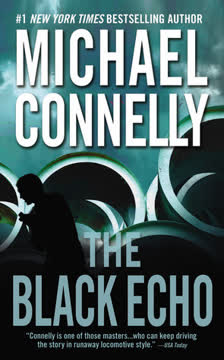
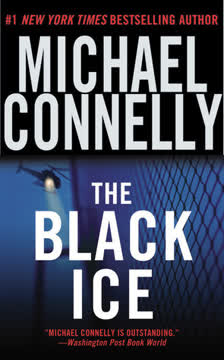

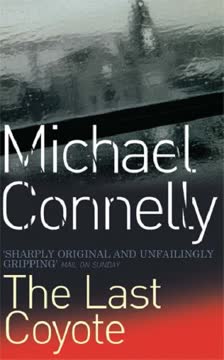
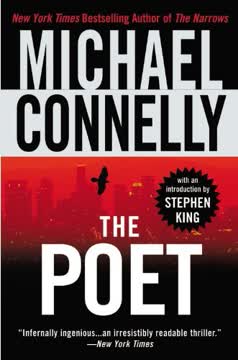
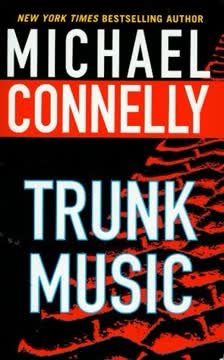
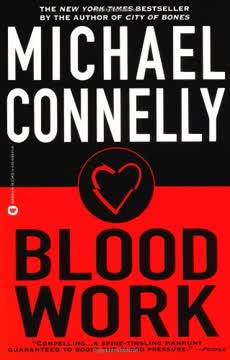
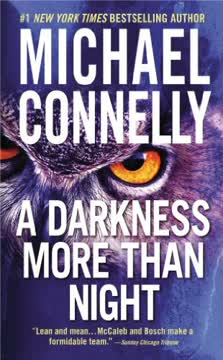
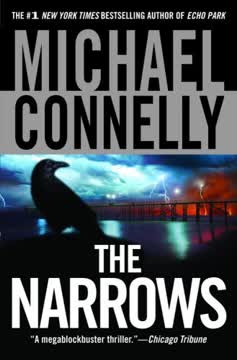
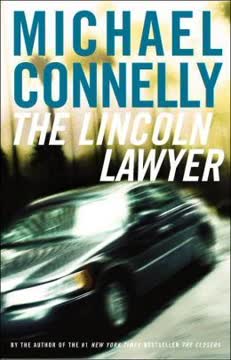
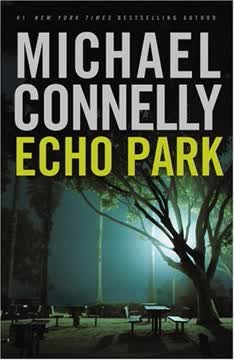
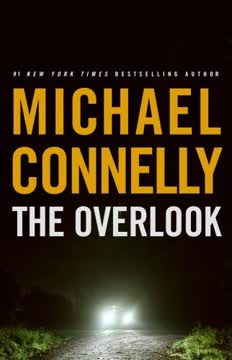
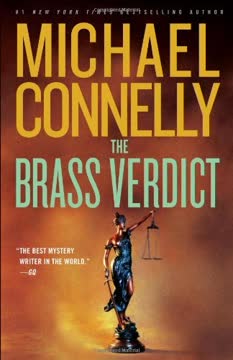
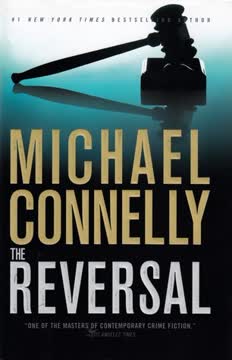

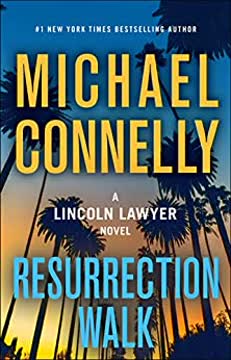
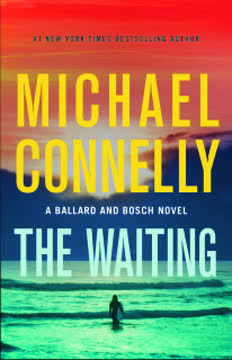
Download PDF
Download EPUB
.epub digital book format is ideal for reading ebooks on phones, tablets, and e-readers.




